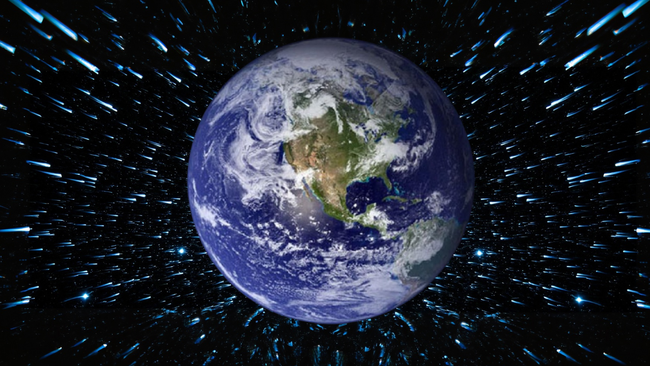41,000 years ago, the Earth experienced a bombardment of cosmic rays as a result of its weakened magnetic field.
It is crucial to comprehend these extraordinary occurrences as they hold significance for their future recurrence, space climate forecasts, and evaluating their impact on the environment and the Earth system.
The most numerous cosmic rays are hydrogen nuclei, those particles were shot into space by very energetic celestial events like the supernova deaths of extremely massive stars. These super-energetic particles are usually prevented from further approaching us by the magnetosphere that parked above our planet also helps to shelter us from the dangerously intense radiation from the sun.
The magnetosphere is not merely a static, inert thing, but it shows a high degree of variability with that phenomenon. For one, the magnetic north “wobbles” slightly away away from the “true north” we commonly refer to. In addition, the other discreet activity the magnetosphere occasionally indulges in is the process of “flip.” This process involves reversing the orientation of the north and south by equating the north pole to south, and the south pole to the north. This process also results in the waning of the field’
Furthermore, during these two periods referred to as auroral substorms, the magnetic poles of the interplanetary magnetic field also “disappear”, only to be replaced by many interplanetary magnetic poles. In other words, within the time-frames of these falling intensities, called “magnetic field excursions”, the strength of global magnetic pole forces is demonstrated to be smaller, meaning that the Earth is less well shielded by cosmic rays at these instances.
One might ask, Are these intervals of low magnetosphere intensity as well it is concomitant with the big crises on the global biosphere, meaning the total zone that life exists on planet Earth beginning from mountaintops and down to the deepest oceans trenches?
“The comprehension of these extreme events is relevant not only to the unprecedented cases but also to long-term climate projections of the space surface and evaluation of the environmental effect on the Earth system,” as Sanja Panovska of the GFZ Potsdam in Germany mentioned.

After cosmic rays have collided with particles in the atmosphere of our planet, they produce “baths” of unstable isotopes, cosogenous radionucleides, that come to the surface of our planet. These gradually accumulate and matter in their content can be studied after their recovery from the sediments of the sea bottom and cores drilling of regions like Greenland and Antarctica.
A well-known event, which is borne by many studies, is the Laschamp excursion, which happened approximately 41 thousands years ago. Panovska has been focusing on the role of the magnetosphere’s volume and the concentrations of radionuclides like beryllium-10 during cases in which the Earth’s magnetic field is intense.
However, Wetherill discovered to her surprise that the beryllium-10 production rate was twice as fast as it was previously with the same rate as particles of cosmic rays deflected to the earth at present. These events do reveal a very deep dip in the magnetosphere during times when the energy release had reached its highest amounts, thus permitting more cosmic rays to enter the Earth’s atmosphere and create shower particles.
Panovska applied these numbers to reconstruct Earth’s magnetosphere losing its volume in this process but painting the picture of it when its strength was weaker. She looks forward to her prospect of revealing more about the edge of the solar system that scientists can obtain from cosmogenic radionuclide and cosmic ray bombardments.
Panovska delivered her hypothetical data of cosmic rays in the session of European Geosciences Union (EGU), during the academic meeting on April 19 (Friday).
Do not forget to share your opinion with us to provide you with the best posts !




0 Comments